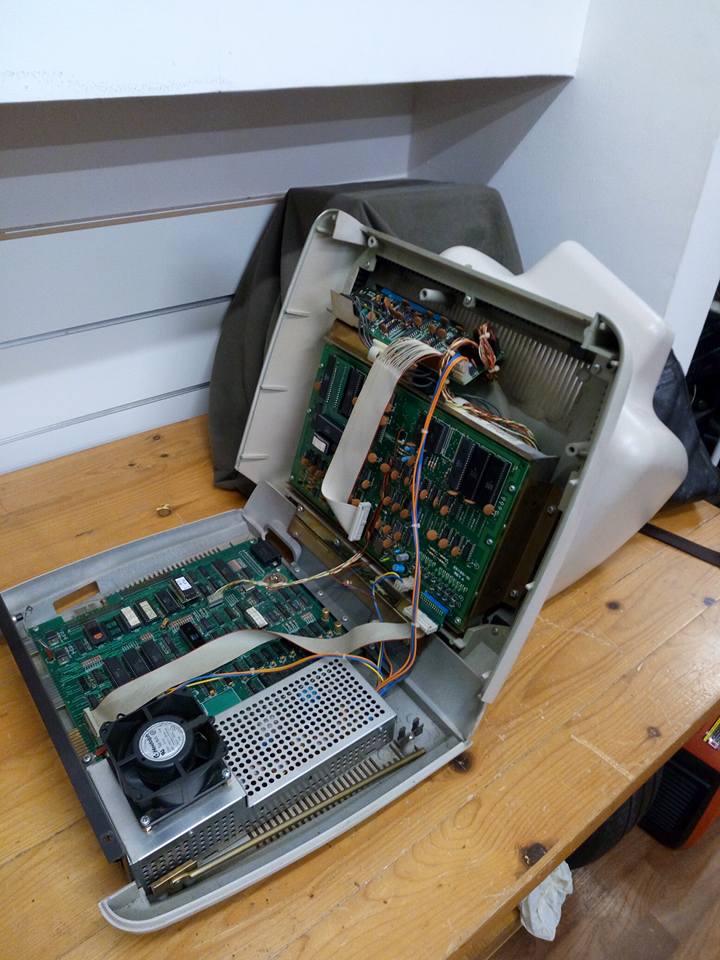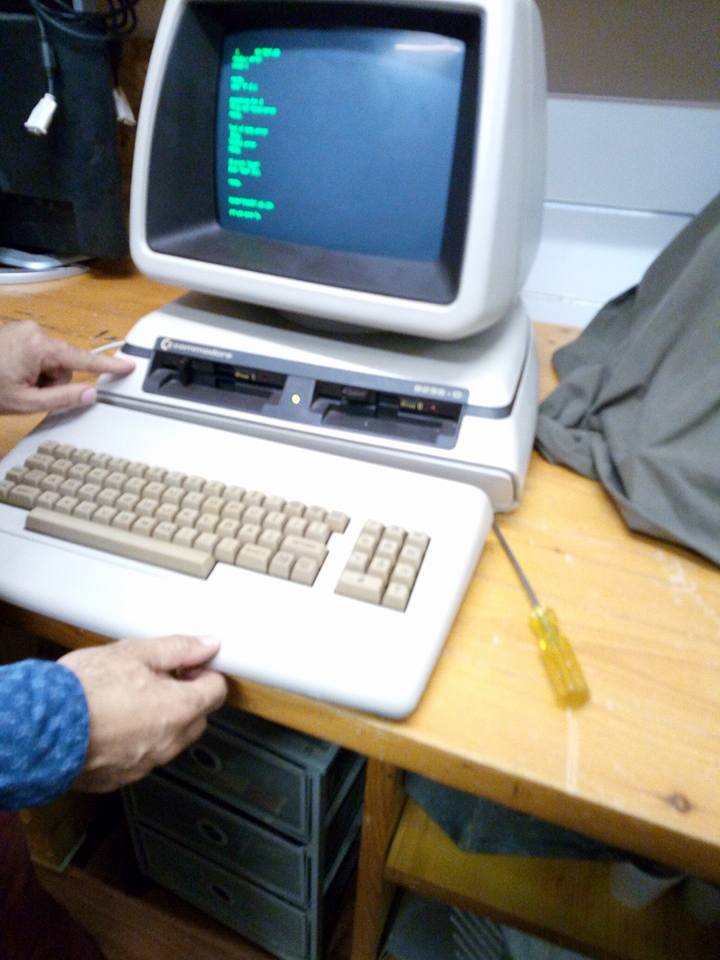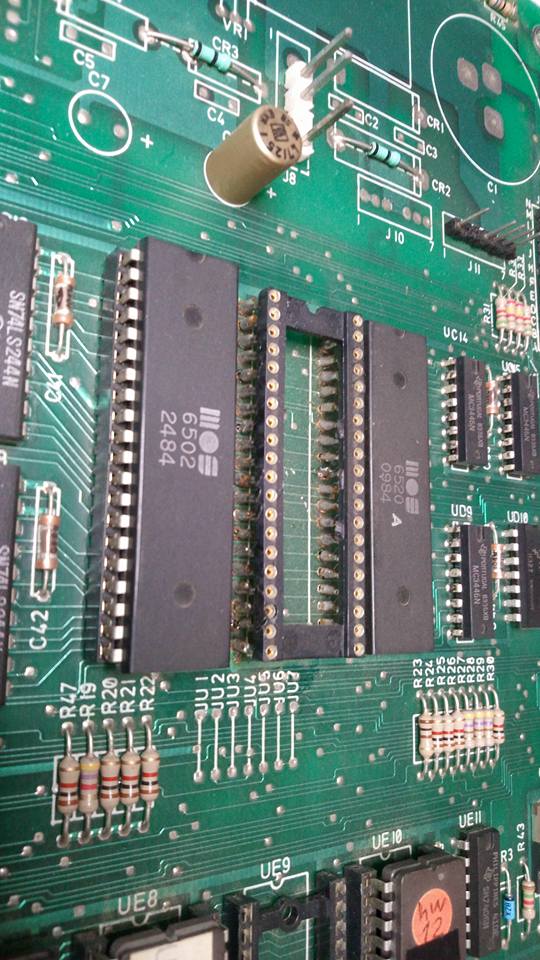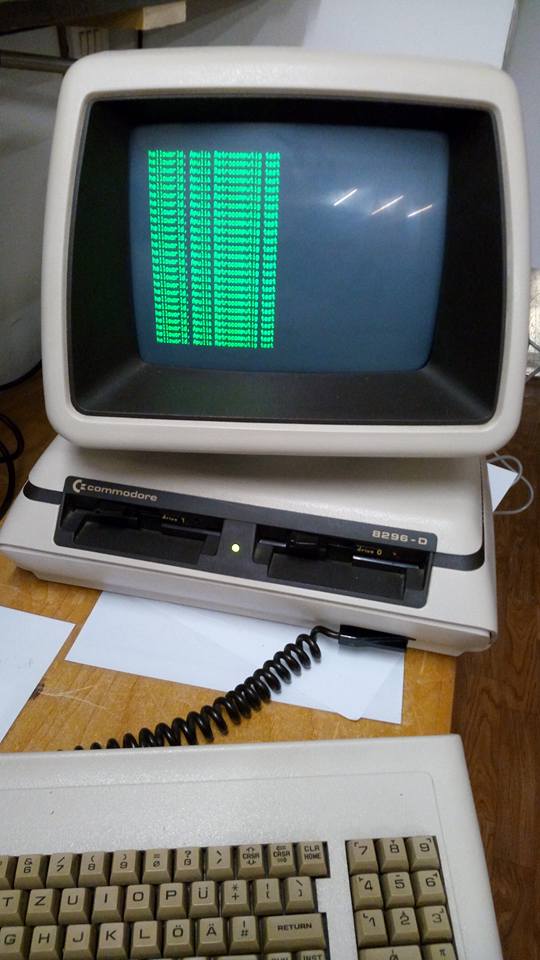Per leggere l’articolo in italiano clicca qui
Restoration of a Commodore PET 8296-D owned by our association member, Stefano Ferilli.
The reported defect is the classic black screen.

First of all we tested the RAMs, the CRT and the CPU and everything was ok. Then we tested the two PLA (Programmable Logic Array) chips, named u5 and u6.
It was possible to replace the PLA’s with 27c512 eproms (it’s better to use eproms with very low access times). So we programmed two eproms with an algorithm available on the internet. Initially we mounted them on the PET with temporary connections, for the sole purpose of testing their integrity and functionality.
With the help of the two eproms the PET starts regularly, unvealing that the PLA u5 chip is faulty.
 To solve permanently we needed to make an adapter, whose design was made by another association member, Emanuele Caldarulo. We then moved on realizing the adapter.
To solve permanently we needed to make an adapter, whose design was made by another association member, Emanuele Caldarulo. We then moved on realizing the adapter.
During the work, an integrated CIA (Complex Interface Adapter) came to our attention because its socket was welded in a bizarre way, to say the least. We then decided to analyze it furthermore.
In order to avoid excessive heating we preferred not to desolder. So, we cut the pins using a sharp and thin cutter, removing the socket very carefully. Burned and damaged tracks came up.
We repaired patiently the damaged tracks, then we mounted a new socket. And we mounted also a socket for the PIA (Peripheral Interface Adapter) chip which was on the side, already removed.
Subsequently the two RIFA capacitors on the power supply circuit were precautionally removed. Finally, we put in its place one of the two floppy drives power leds.
We then proceeded to functional tests.
In the beginning, the disk drives did not seem to work. During a lab session, however, our association member Vito Fariello noticed that a connector was not inserted correctly. By correctly inserting the connector, using some new 5.25″ floppy disks, we tested formatting, reading and writing operations using the Commodore Basic 4.0 commands suggested by our newest member, Alessandro Liberalato, who already had experiences on this PET model.
Now everything works correctly.
Antonio Caradonna

